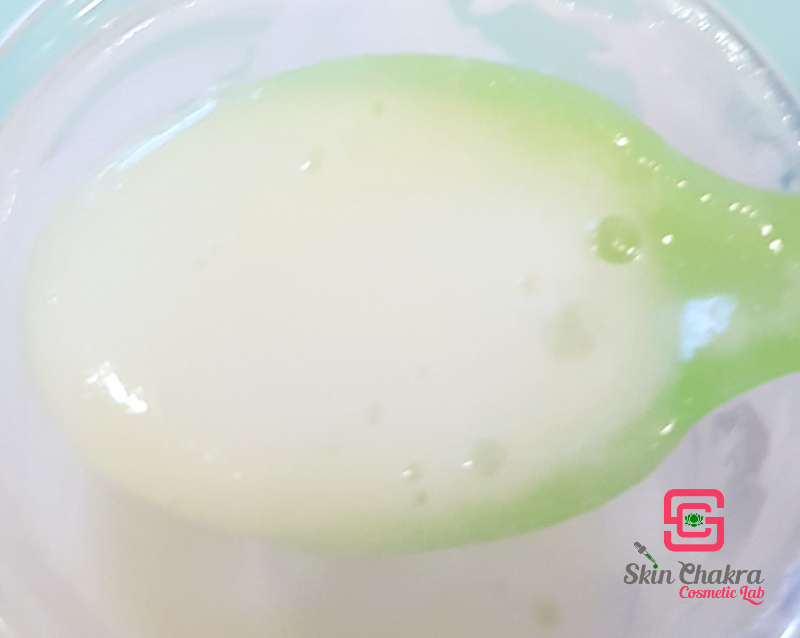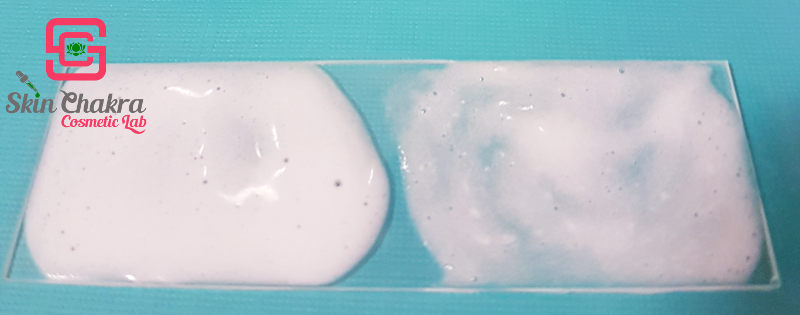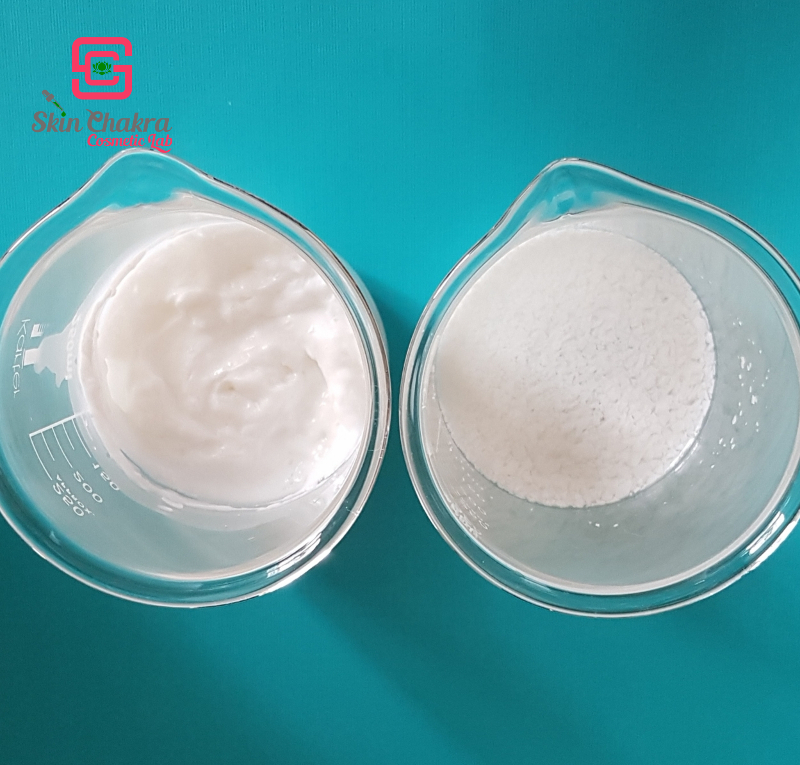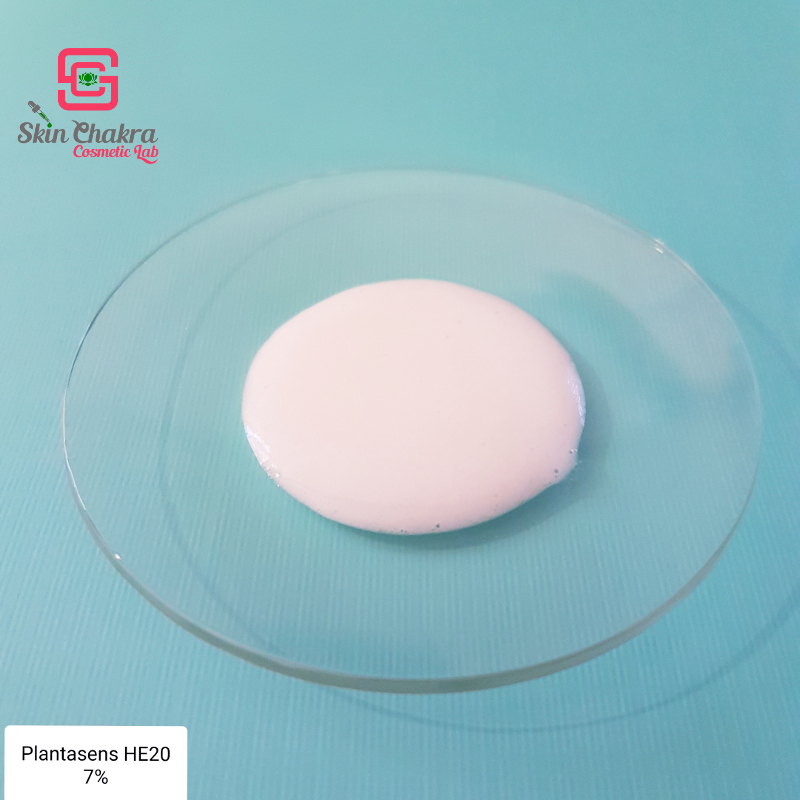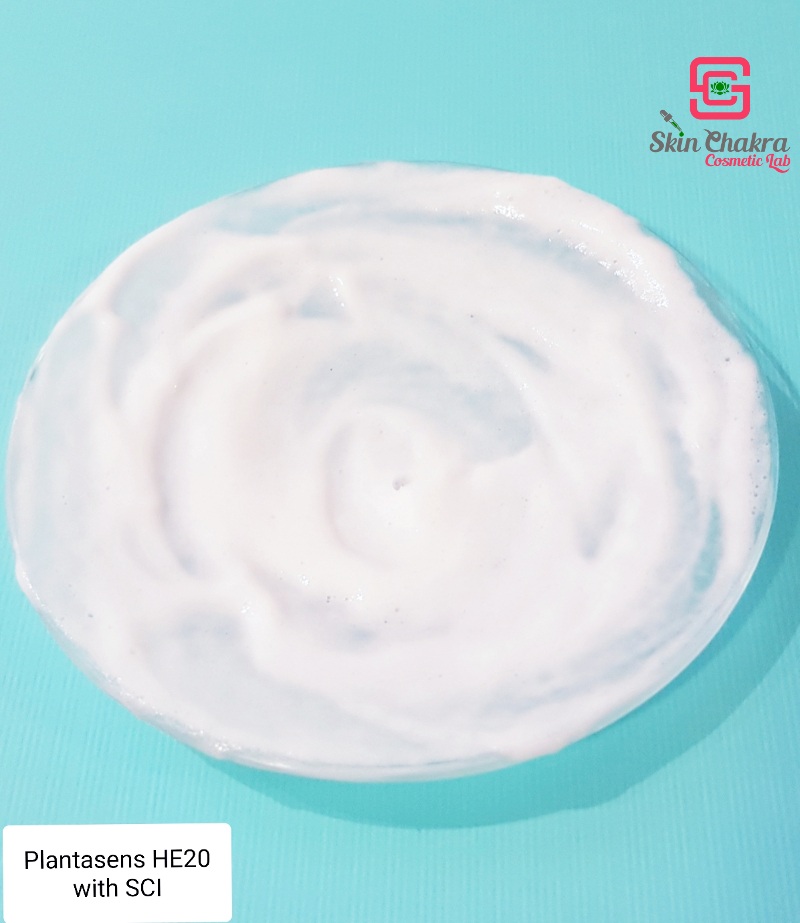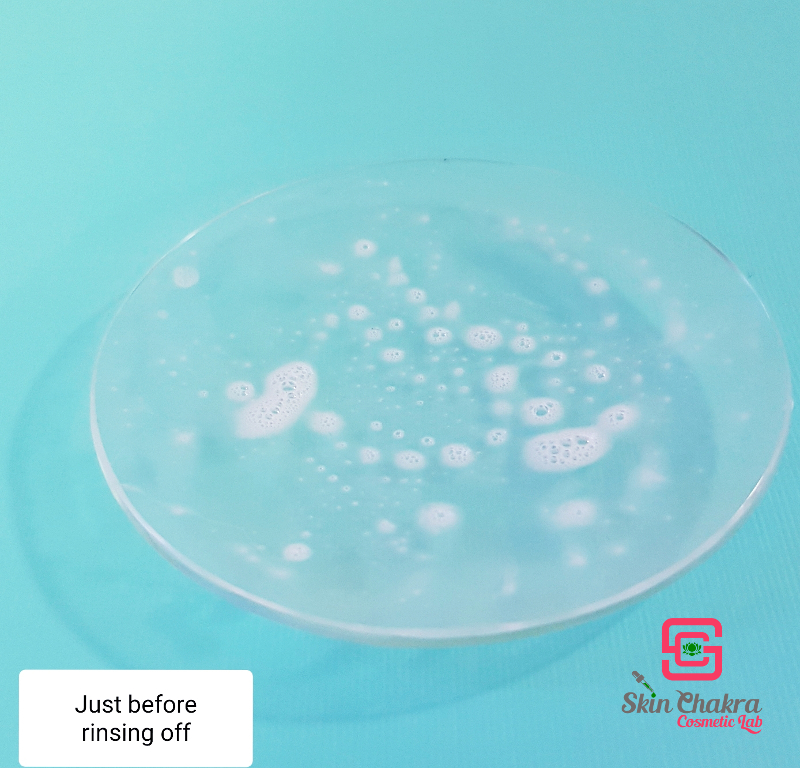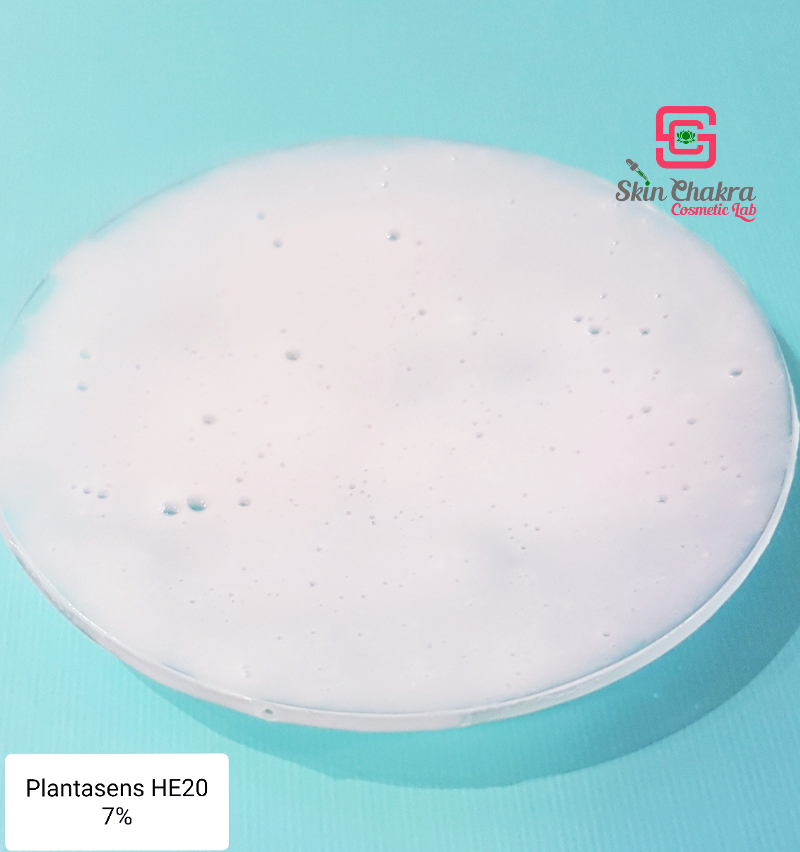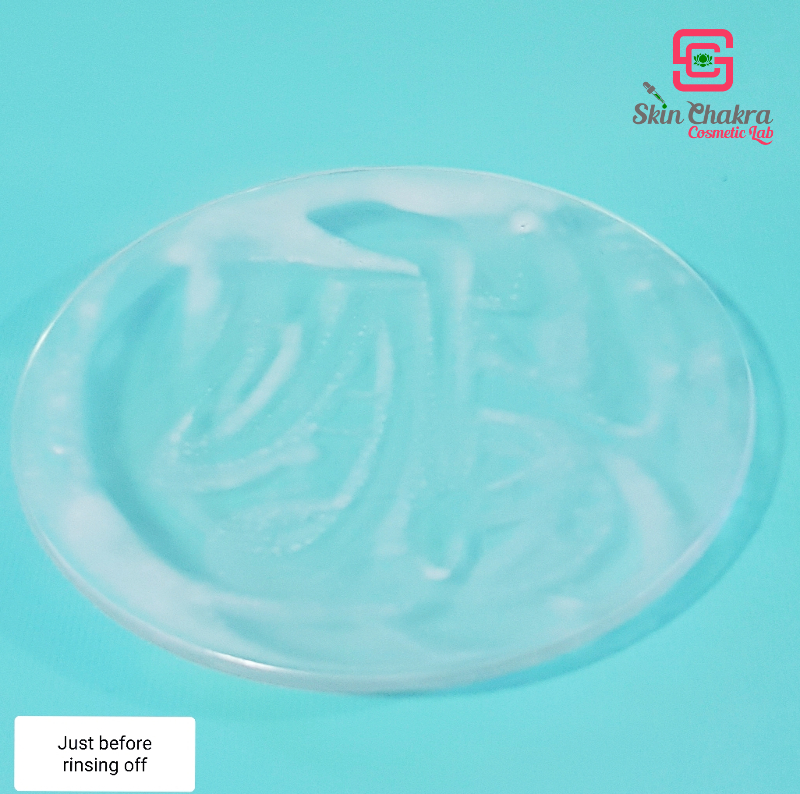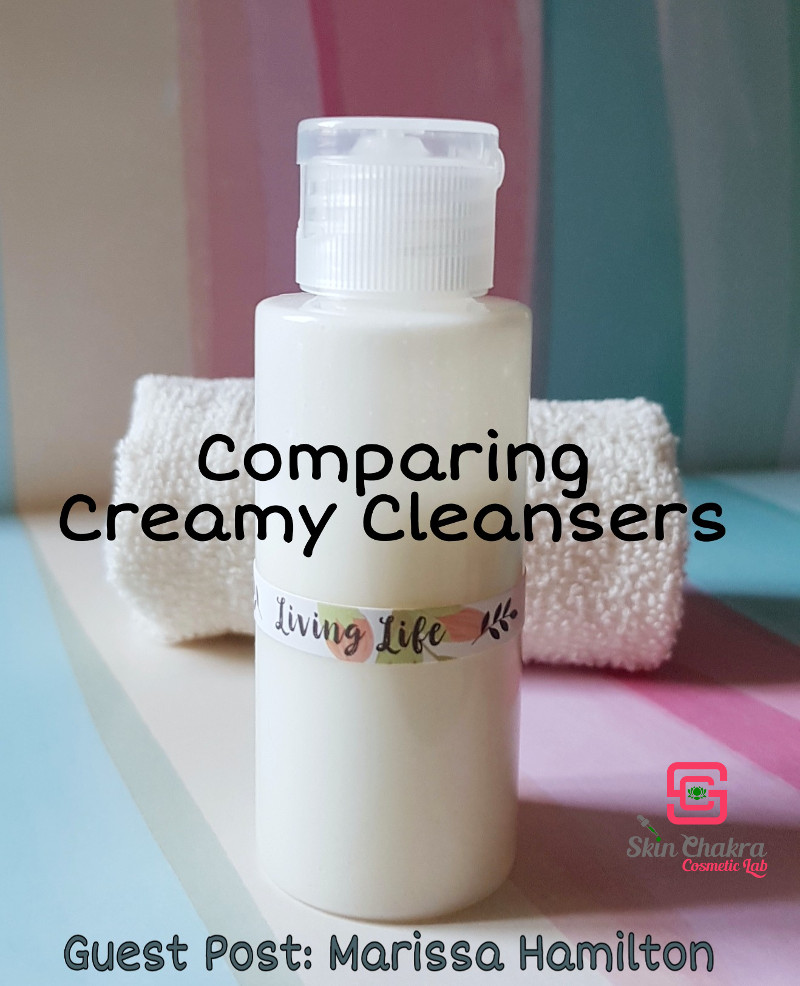
Donnerstag, 18. April 2019
Creamy skin cleansers: an overview (guest post)
Today's post is written by Marissa Hamilton from Canada.
Marissa is one of our amazing customers with a passion for formulating natural products. She brings in skills related to her science background (pharmacy and nutrition) and also her creative talents (mixed media artist) to her projects. She is self-motivated and willing to work enthusiastically towards achieving goals that inspire her and does much more beyond just doing as minimum as necessary to solve a problem or fulfil an assessment.
Marissa has excellent attention to detail and proceeds in a logical fashion as she does her research and then develops and tests her formulations. She has the habit of comparing products to one another to see what an ingredient does in a formulation and also how different ingredients combine with each other. She observes and describes ingredients, procedures and products in a way I can never do.
She delights in breaking down a topic into understandable chunks to help facilitate learning on its various aspects.
Here we share with you her experiences and some of her observations on comparing creamy cleansers. This is rather a long blog post but I couldb't bring it over my heart to make it shorter by removing any part of it.
This is a very useful read and you need time and patience to read and digest each chunk of information. I'm fully aware that the smartphone generation doesn't have the patience to read long posts but this work is rather a project worth at least a BSc degree than a blog post.
Here you are with Marissa's post.
One of my favourite things to formulate is an emulsion. We have had a very long and cold winter here in Ontario, Canada (with snow still expected in April). Most of the last 6 months I have been supporting my dry skin with a variety of creams and lotions that I have been formulating.
While I enjoy creating and using moisturizers, I also ensure that I put time and attention to formulate skin cleansers that have a positive (and supportive) impact on my skin.
This leads us to the topic of today - Cream cleansers or Shower creams or Cleansing milks. But what’s in a name? They all are simply lovely!
When I saw the post from SkinChakra about making a shower cream using Plantasens HE20 emulsifier and Sodium cocoyl isethionate (SCI), I jumped right in to make it. I did not have the tea wax or prebiotics on hand but I had everything else. I had to slightly adapt the formulation but the results actually were crème-de-la-crème as SkinChakra Team had promised.
I had contacted them on their Facebook post about it to say I was making it and they asked for my feedback after I had done it. I had just made an adapted version of their Refreshing Minty Shower Cream with Plantasens HE20 so I was excited to compare it to Plantasens HE20/SCI formulation. I posted my comments of both on their Facebook page and they liked that.
Then I thought it would be great if I could share all my pictures and full experience. But before doing that, I made another set of cream cleansers because I really like comparing.
In March I made the following which was adapted based on ingredients and my own reasoning. I did follow the process outlined in the Minty Shower Cream blog post:
| Phase A | |
| Freshly boiled and cooled distilled water | to 100,0% |
| Plantasens HE20 | 5,0% |
| Phase B | |
| Sweet almond oil | 3,0% |
| Jojoba oil | 3,0% |
| Phase C | |
| Glycerine | 5,0% |
| Solagum AX | 0,4% |
| Phase D | |
| Natural tocopherols | 0,5% |
| Rosemary CO2 extract | 0,1% |
| Phase E | |
| Coco glucoside | 18,0% |
| Decyl glucoside | 9,0% |
| Coco glucoside/glyceryl oleate | 1,0% |
| Natural chelator PA-3 | 0,1% |
| Sodium lactate | 2,0% |
| Phase F | |
| Spectrastat G2-N | 0,8% |
| Lactic acid 80% | to adjust the pH |
| Peppermint essential oil | 0,3% |
| Eucalyptus essential oil | 0,4% |
You will notice that I decreased the Plantasens HE20 to 5%. At the time I was thinking that for the amount of oils (<10%) that 7% was a lot. I felt that since it is a rinse off product it was not economical to use high amounts and secondly, I was thinking of emulsifier to fats ratios. Elham had written in a blog post that we always want the optimum and the minimum emulsifier concentration for the concentration of the oil phase. I was focused on this and just missed the fact that I needed to take surfactants into consideration.
This was a mistake and I was definitely reminded by the result. You will recall that adding surfactants can lower viscosity of an emulsion and when my cleanser was all done (and actually even during the process I started to get a feeling things were not quite right), I saw how “weak” my “not so creamy” cleanser looked. And the lightbulb went back on – I should have used more emulsifier!!
However it is in this way we really learn – taking a different road and seeing what we discover and then recalculate the route and try again.
Here is an up close of the cleansing milk I made but what was supposed to be a shower cream. It is thin and drips/flows easily. It is actually white but looks off white which shows how little consistency it actually has.
From previous experiments with emulsions, I know that Plantasens HE20 used at higher concentrations gives a richer texture and higher viscosity. You may ask – why increase the emulsifier when you can just add more oils for more creamy appearance and richer feel? It would be counterproductive since this is a cleanser. We want to remove oils/dirt and not add more oils. We just want to cleanse gently without stripping the skin dry and also not put in so many fats that they compete with the gentle surfactants used in the formulation.
I was actually getting ready to make the same above cleanser at Plantasens HE20 7% when a shiny new blog about another shower cream was posted. This took me on a different journey. Let me tell you what happened with that and then we will come back to Plantasens HE20 7% formulation further down in this blog.
My next attempt was the following - adapted to fit ingredients that I had on hand and also when trying something new I will lean on the side off KISS formulations but keeping in mind that sometimes you want a more realistic experience so you cannot eliminate certain ingredients.
| Phase A | |
| Distilled water @ ca. 70oC | to 100,0% |
| Sodium cocoyl isethionate SCI 80% | 10,0% |
| Plantasens HE20 | 5,0% |
| Phase B | |
| Moringa oil | 3,0% |
| Olive squalane | 1,0% |
| Jojoba oil | 1,0% |
| Natural tocopherols | 0,5% |
| Phase C | |
| Glycerine | 5,0% |
| Solagum AX | 0,4% |
| Phase D | |
| Coco glucoside | 5,0% |
| Decyl glucoside | 5,0% |
| Coco glucoside/glyceryl oleate | 1,0% |
| Natural chelator PA-3 | 0,1% |
| Sodium lactate | 1,0% |
| Spectrastat G2-N | 0,8% |
| Lemon zest oil | 0,2% |
| Cedarwood oil | 0,2% |
| Phase E | |
| Lactic acid 80% | to adjust the pH |
Here is a picture of the two products (same amount) placed on a slide so you can see the difference:
The creamier one on the left has Plantasens HE20 at 5% with SCI 10% and a smaller amount of other surfactants (non-ionic). The right side shows Plantasens HE20 at 5% with the larger amount of coco glucoside and decyl glucoside. You can easily see that the one with SCI looks creamier and richer and more viscous.
Now let’s take a moment for me to sing the virtues of Sodium Cocoyl Isethionate.
like that from a formulating standpoint it has the following characteristics:
-
It is approved for natural formulations
-
It is delivered as little white noodles so I don’t need to wear a mask (as I do for powder forms)
-
It is available in highly concentrated form – active matter 80% so I can use it for my liquid formulations (such as cream cleanser) or hard formulations (cleansing bar, shampoo bar)
-
It has a lower pH than other surfactants
AND
I like that from an application standpoint it has the following characteristics:
-
It is a mild plant based anionic surfactant so well-suited for my sensitive skin
-
It creates a creamy, stable and dense foam
-
It leaves a pleasantly soft skin feel
-
It is sulfate and PEG free
AND
I also like that from an environmental standpoint it has the following characteristics:
-
It is based on renewable raw materials (vegetable fatty acids).
-
It is biodegradable
-
It is compatible to hard water so no sedimentation, no foam reduction and no scaling
Now you may be wondering - what happened about that other formulation with Plantasens HE20 at 7%?
Well, I made two more creamy cleansers. No, I could not just make one because then what would I compare it to in real time? I also took MORE pictures so you can see what I mean when I share my experience.
Plantasens HE20 7% Minty Shower Cream – I increased the emulsifier and also changed the fats to be the same (in type and amount) as the Plantasens HE20 with SCI formulation that follows this. I wanted to try to keep as much as possible the same for both but of course these are still two different products.
| Phase A | |
| Freshly boiled and cold distilled water | to 100,0% |
| Plantasens HE20 | 7,0% |
| Phase B | |
| Moringa oil | 3,0% |
| Olive squalane | 1,0% |
| Jojoba oil | 1,0% |
| Natural tocopherols | 0,5% |
| Phase C | |
| Glycerine | 5,0% |
| Solagum AX | 0,4% |
| Phase D | |
| Coco glucoside | 18,0% |
| Decyl glucoside | 9,0% |
| Coco glucoside/glyceryl oleate | 1,0% |
| Natural chelator PA-3 | 0,1% |
| Sodium lactate | 1,0% |
| Spectrastat G2-N | 0,8% |
| Lemon zest oil | 0,2% |
| Cedarwood oil | 0,2% |
| Phase E | |
| Lactic acid 80% | to adjust the pH |
Plantasens HE20 5% with SCI Shower Cream
| Phase A | |
| Distilled water @ ca. 70oC | to 100,0% |
| Sodium Cocoyl Isethionate SCI 80% | 10,0% |
| Plantasens HE20 | 5,0% |
| Phase B | |
| Moringa oil | 3,0% |
| Olive squalane | 1,0% |
| Jojoba oil | 1,0% |
| Natural tocopherols | 0,5% |
| Phase C | |
| Glycerine | 5,0% |
| Solagum AX | 0,4% |
| Phase D | |
| Coco glucoside | 5,0% |
| Decyl glucoside | 5,0% |
| Coco glucoside/glyceryl oleate | 1,0% |
| Sodium lactate | 1,0% |
| Natural chelator PA-3 | 0,1% |
| Spectrastat G2-N | 0,8% |
| Lemon zest oil | 0,2% |
| Cedarwood oil | 0,2% |
| Phase E | |
| Lactic acid 80% | to adjust the pH |
Thoughts on the procedure: I let the SCI and Plantasens HE20 swell up for 2h in warm distilled water and then it was so easy when I started method of preparation as blending and emulsifying were so efficient. Same was done for just Plantasens HE20 at 7%.
On the right you can see the flakes of Plantasens HE20 added to the water phase. It has been about 30 min so it has started softening up . On the left you can see Plantasens HE20 and SCI at about 1.5 hours and it is already looking creamy.
And below you can see the final (made) products:
In the next picture you can see there are some little bubbles. It is important to go slow when blending and incorporating the surfactant phase. This part can be challenging in any surfactant containing product and you often you get bubbles.
I am happy to say (and the the next pictures show this) the Plantasens HE20 at 7% is definitely more of a shower cream now than a weak cleansing milk that I had made at 5%.
What about pH? For these formulations I wanted the pH to be between 4.5 and 5.0.
How did the cleansers feel on application and use?Well I could have just told you but I thought I would do a little demonstration and include pics to show you what the cleansers do as water is added.
For each I have put some cleanser on the glass and added a bit of water to start the cleansing process. Then in the second picture I show what it does as it comes to the end when the cleanser is very diluted and mostly rinsed off.
The Plantasens HE20 with SCI is so creamy and luxurious feeling as you start to apply. It has a “robust” and stable foam (middle part at about half water is added) and it actually suds up like when you are using a bar of soap but has a really pleasant smooth glide feeling that is nourishing. Then as it gets diluted and is almost rinsed off you see just remains of little bubbles/suds.
No picture for this but the cleanser formulated with Plantasens HE20 5% with larger amount of coco glucoside and decyl glucoside is thinner and drippier but once I started applying to my hands it was surprisingly still creamy. However, it did not produce much lather or foam.
Below are pics of Plantasens HE20 at 7%. Increasing the emulsifier made it creamier and feel richer. If you only add a bit of water you get a nice glide and creamy feel. As you add more water there is a little bit of lather but this cleanser remains creamy and even rinses off like that – as you see from the picture.
I liked how both the cleansers rinsed off easily. I have used other types of products called creamy cleansers that leave a greasy feel or don’t seem to rinse off. Those were just emulsions without any surfactants. There was directions to scrub off with a sponge or terry cloth. Fortunately, this is not the case here and I get to have the best of both worlds – emulsions and surfactants!
Post application thoughts:
These products work well in terms of cleansing properties. I like that my skin feels comfortable and soft after using these creamy cleansers. It is not dry and tight feeling like when I have used a conventional body wash or even a green washed "natural" labelled (but still harsh to sensitive skin) body cleanser.
However, with the winter we have had here and just going between cold dry and then to heat dry indoors I feel I still need a post-bathing body lotion. I will compare how these cleansers work in hotter weather. During summer, we may have a lot more humidity and with the milder cleansing these products provide, I may be fine without extra moisturization after showering.
I will be making some other types of cleansers too and doing comparisons as we get to warmer weather and if there is interest I can share pics and experiences of my future experiments.
BeHappy and have fun
